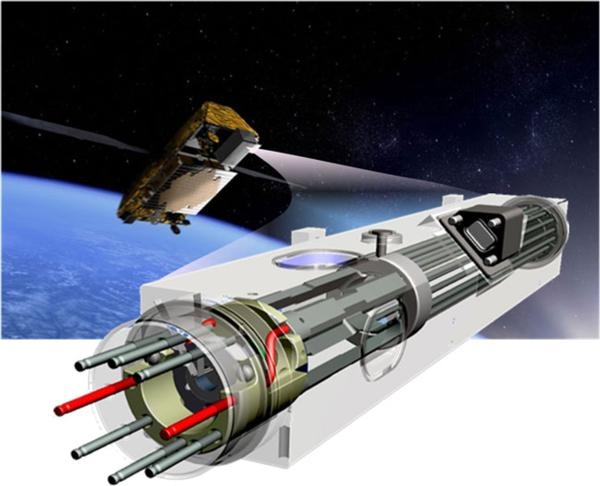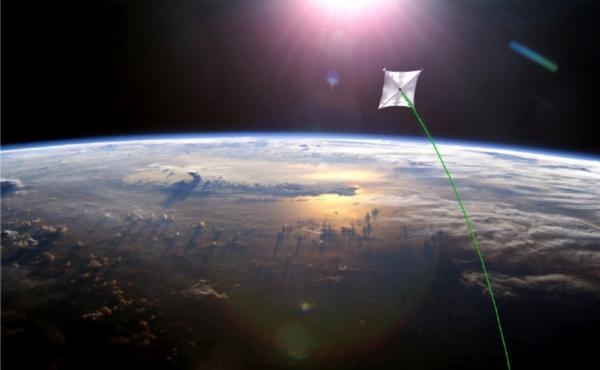Communications, Navigation And In-Space Propulsion Systems To
Fly On Future Missions
 NASA has selected three proposals as
Technology Demonstration Missions to transform space
communications, deep space navigation and in-space propulsion
capabilities. The projects will develop and fly a space solar sail,
deep space atomic clock, and space-based optical communications
system.
NASA has selected three proposals as
Technology Demonstration Missions to transform space
communications, deep space navigation and in-space propulsion
capabilities. The projects will develop and fly a space solar sail,
deep space atomic clock, and space-based optical communications
system.
These crosscutting flight demonstrations were selected because
of their potential to provide tangible, near-term products and
infuse high-impact capabilities into NASA's future space operations
missions. By investing in high payoff, disruptive technology that
industry does not have today, NASA matures the technology required
for its future missions while proving the capabilities and lowering
the cost of government and commercial space activities.
"These technology demonstration missions will improve our
communications, navigation and in-space propulsion capabilities,
enable future missions that could not otherwise be performed, and
build the technological capability of America's space industry,"
said NASA Chief Technologist Bobby Braun at NASA Headquarters in
Washington. "Optical communication will enable rapid return of the
voluminous data associated with sending spacecraft and humans to
new frontiers. High-performance atomic clocks enable a level of
spacecraft navigation precision and autonomous operations in deep
space never before achieved, and solar sails enable new space
missions through highly efficient station-keeping or
propellant-less main propulsion capabilities for spacecraft."
LCRD Concept

The proposals selected for demonstration missions are:
- Laser Communications Relay Demonstration, David J. Israel,
principal investigator at NASA's Goddard Space Flight Center in
Greenbelt, MD.
- Deep Space Atomic Clock, Todd Ely, principal investigator at
the California Institute of Technology/NASA's Jet Propulsion
Laboratory in Pasadena, CA.
- Beyond the Plum Brook Chamber; An In-Space Demonstration of a
Mission-Capable Solar Sail, Nathan Barnes, principal investigator
at L'Garde Inc., of Tustin, CA.
Technology Demonstration Missions are a vital element in NASA's
space technology maturation pipeline. They prove feasibility in the
environment of space and help advance innovations from concept to
flight and use in missions. The advances anticipated from
communications, navigation and in-space propulsion technology will
allow future NASA missions to pursue bolder and more sophisticated
science, enable human missions beyond low Earth orbit, and enable
entirely new approaches to U.S. space operations.
The Laser Communications Relay demonstration mission will fly
and validate a reliable, capable, and cost-effective optical
communications technology. Optical communications technology
provides data rates up to 100-times higher than today’s
systems, which will be needed for future human and robotic space
missions. The technology is directly applicable to the next
generation of NASA's space communications network. After the
demonstration, the developed space and ground assets will be
qualified for use by near-Earth and deep space missions requiring
high bandwidth and a small ground station reception area.
Atomic Clock Concept

The Deep Space Atomic Clock demonstration mission will fly and
validate a miniaturized mercury-ion atomic clock that is 10-times
more accurate than today’s systems. This project will
demonstrate ultra-precision timing in space and its benefits for
one-way radio navigation. The investigation will fly as a hosted
payload on an Iridium spacecraft and make use of GPS signals to
demonstrate precision orbit determination and confirm the clock's
performance. Precision timing and navigation is critical to the
performance of a wide range of deep space exploration missions.
The Solar Sail demonstration mission will deploy and operate a
sail area 7 times larger than ever flown in space. It is
potentially applicable to a wide range of future space missions,
including an advanced space weather warning system to provide more
timely and accurate notice of solar flare activity. This technology
also could be applied to economical orbital debris removal and
propellant-less deep space exploration missions. The National
Oceanic and Atmospheric Administration is collaborating with NASA
and L'Garde Inc. on the demonstration.
Solar Sail Concept

The clock and solar sail will be ready for flight in three
years. The optical communications team anticipates it will take
four years to mature the technology for flight. NASA's Office of
the Chief Technologist plans to make a total investment in these
three missions of approximately $175 million, contingent on future
appropriations. Each of the selected teams also will receive
funding from partners who plan on using the technologies as part of
future space missions.
Projects include all elements of the flight test demonstration
including test planning, flight hardware, launch, ground
operations, and post-testing assessment and reporting. Each team
has proposed between one and two years of spaceflight operations
and data analysis. To reduce cost, the technology demonstrations
will ride to space with other payloads aboard commercially provided
launch vehicles. Launches are anticipated in 2015 and 2016.
 ANN's Daily Aero-Linx (04.16.24)
ANN's Daily Aero-Linx (04.16.24) Aero-News: Quote of the Day (04.16.24)
Aero-News: Quote of the Day (04.16.24) Airborne 04.10.24: SnF24!, A50 Heritage Reveal, HeliCycle!, Montaer MC-01
Airborne 04.10.24: SnF24!, A50 Heritage Reveal, HeliCycle!, Montaer MC-01 Airborne 04.12.24: SnF24!, G100UL Is Here, Holy Micro, Plane Tags
Airborne 04.12.24: SnF24!, G100UL Is Here, Holy Micro, Plane Tags Airborne-Flight Training 04.17.24: Feds Need Controllers, Spirit Delay, Redbird
Airborne-Flight Training 04.17.24: Feds Need Controllers, Spirit Delay, Redbird






